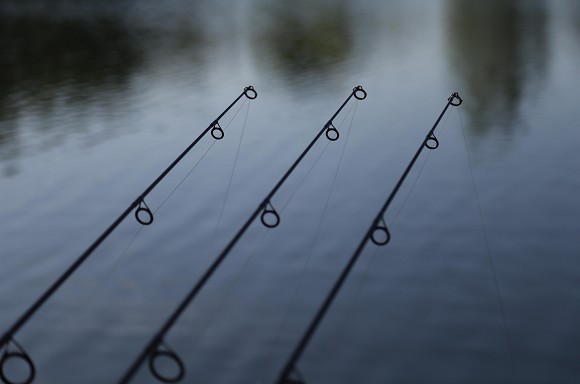
The big question: Tight or slack lines
We ask five experts what they prefer - tight or slack lines?
Question: With every man and his dog advocating slack lines (and there are ‘slack lines’ and ‘slack lines’), do you think the over-cautious carp are getting away with it even more than ever, as it goes without saying, bite indication is desensitised with this form of angling? So would the use of laser tight lines, heavy leads and ultra sharp hooks be a natural U-turn progression, leading to more fish hooked, or is the tight line going to put the fear of god into them?
Nick Burrage
"I like it super slack"
“I’m a big fan of slack lines and how I go setting mine is by letting a foot of line out at a time until it hangs limp in the bottom of the rod rings. The lead system is always semi-fixed to allow the line to run through the lead after a quick shake of the fish’s head, turning it into a running set-up and resulting in giving me a pulley effect, so even if the fish runs at me, I still get some indication at the rod end.
“Heavy leads and tight lines are okay for snag fishing, for obvious reasons, but for open water I do feel a tight line will ‘shut the gate’ on the area you’re fishing. Carp brush through loose weed and pads all the time, whereas a tight line will, without a doubt, spook!
“Bite indication maybe less effective fishing slack lines but I feel looking at the big picture there’s more to be gained using the method. And another point is liners which can be picked up on slack lines (showing the whereabouts of the fish and helping with location) whereas on a bow tight line these signals can be missed altogether.”
Calum Kletta
"Semi slack with a big lead"
“Personally I don’t like using a bowstring tight line unless it is absolutely necessary as I feel it can spook fish by attracting debris, forming an unnatural line to where the rig is. On the other hand, excessively slack lines can cause more problems than they’re worth! My approach is a semi slack line, allowing the water pressure to push the line down to near the bottom at the rig end, along with tubing or leadcore. Coupled with a sharpened hook and a compacted size lead such as the Gardner Bolt Bomb in 4oz or heavier, will ensure the fish is hooked well. A semi slack line will mean the fish can move a couple of feet before registering at the rod, but with a sharp hook and a heavy lead to set it.”
Craig Mortimer
"It really does depend"
“Now what a question this is! Personally for me it really does depend on the situation I’m in. For example, if I was stalking or fishing a close margin spot I would be using Mirage fluorocarbon and as slack as necessary, along with a very heavy lead. In contrast to this, if I was fishing at distance or up tight to some snags or big weedbeds, I would be fishing tight lines and locked up. This gives me complete indication regardless of which direction the fish moves as I am in direct contact with the lead. It also gives me positive bite indication should the fish move towards me resulting in a drop back. If you were to get a bite on a slack line, how would you know if were getting done? In my view the chances are very slim. As we all know, the theory and the unknown are what make carp fishing addictive.”
Martin Locke
"How slack is slack?"
“It’s the age-old question: slack v tight, and my question back is: how slack is slack? Some of the very best anglers will only ever use ultra tight lines; look at the success of the lads casting three rods as close as possible onto one tightly baited spot. You can imagine three tramlines laying a few inches apart being the scariest thing ever for the carp go near it, but we know this isn’t what happens by the results.
“Regarding slack lines, flicking a few feet off the rod top after casting won’t make any difference at the ‘business end’ if it’s at any distance out, it won’t slowly ‘snake out’ to the rig as we might think/hope as there’s nothing pulling it out there! Slack line, to most people, is leaving the indicator hanging down a few inches/on the ground and that’s the way I fish wherever possible, as you still get the (major) benefit of registering line bites, therefore knowing that there are fish in the swim."
Shaun Harrison
"Constantly tweaking"
“The carp regularly get away with it when slack lines are employed – I have watched them. To my mind one of the greatest steps back in carp angling over the past couple of decades has been effective bite indication. I guess coming through the era that I did, I will never get out of the habit of constantly tweaking my indicator weights to just sit at ‘half-mast’ in the undertow. It is essential for me to have the lead and the visual indicator balanced so the line is neither tight nor slack. Similarly, every visual indicator I see sat below most anglers rods these days the chains/cord are far too short to not spook the fish during a line bite. With the indicator free to rise, the line often simply falls away with a weed like feel rather than a cheese wire line.”


